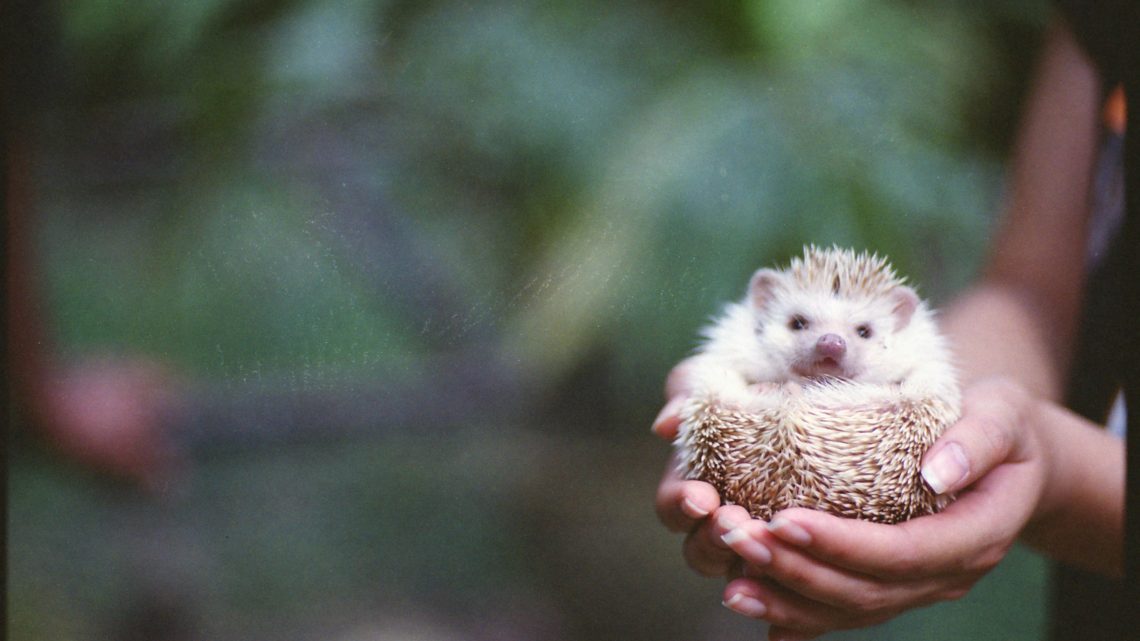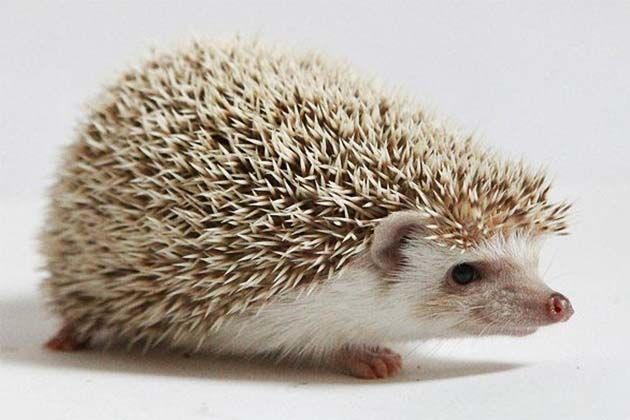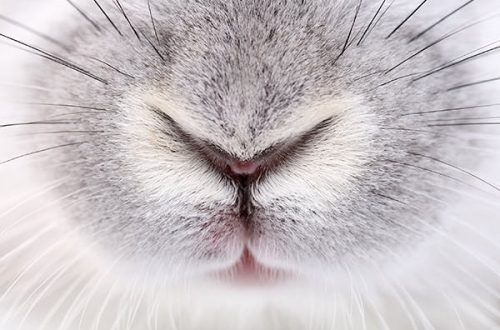
African pygmy hedgehog: maintenance of a prickly pet

The domestic African pygmy hedgehog is an artificial subspecies of the wild white-bellied African hedgehog that does not live in nature. What kind of animal it is, how to care for it – we will learn from this article!
Outwardly, the African pygmy hedgehog looks like an ordinary hedgehog, but smaller in size – up to 20 centimeters. Weight does not exceed 500 g. They live on average up to 6 years. The upper part of the body is covered with needles. When the hedgehog is calm and relaxed, its needles are not prickly at all, they lie along the body, when frightened or threatened, the hedgehog tenses its muscles and the needles stand at different angles.
Contents
Keeping an African Pygmy Hedgehog
The cage for the pygmy hedgehog should be spacious – the bigger the better, at least 70 cm long.
If you want to use a multi-level cage, then it must be equipped with safe transitions from floor to floor. You can, for example, build a staircase from a closed ventilation pipe or a ferret tunnel. Since hedgehogs have poor eyesight, a hedgehog may fall from an ordinary staircase, where there are no railings on the sides.
Use wood shavings or coarse sawdust, or wood, paper, or corn litter for rodents. Do not use coniferous and flavored fillers, as well as hay, it does not have good hygroscopicity and can quickly become moldy.
There should be shelters in the hedgehog cage – houses and / or fleece bags, a “toilet” corner – you can put a corner toilet for rabbits, feeders, drinkers and, of course, a running wheel made of plastic or wood. The diameter of the wheel for the hedgehog is at least 28 cm and must be solid to prevent the paws from falling between the bars. The hedgehog needs to run on a wheel: it is nocturnal, must move a lot and needs outdoor games that cannot be replaced by walking around the room. It is also contraindicated to keep hedgehogs in a cage with a slatted floor! All hedgehogs (both African and others) are adapted to walk on a flat surface. When purchasing a hedgehog cage, remember that hedgehogs, despite their outward clumsiness, climb well and can get out if they wish, so an open-top cage or terrarium is not suitable for you. Don’t buy a crate with a lot of space between the bars (like for ferrets or rabbits): a small hedgehog can “leak” through the bars or get stuck. The cage (or terrarium) should be well ventilated. Avoid drafts, merciless direct sunlight (the hedgehog should be able to hide from them). The optimum temperature in the room should be 20-25 ° C, overheating is extremely dangerous for the hedgehog’s health. The cage should be cleaned frequently. If the hedgehog has chosen a certain corner for his toilet, which is not always, but it happens, clean it every day, and 1-2 times a week do a major cleaning in the cage with washing the pan and wiping the rods. The feeder and drinker should always be clean!
What to feed a hedgehog
For hedgehogs, there are industrial foods such as Spike’s Dinner and Dajana Country Mix Exclusive Hedgie, or super premium dry cat food. Instead, or as a desirable addition, the hedgehog can be given:
- Live or defrosted fodder insects – crickets, cockroaches, less often – zofobas and locusts.
- day old chicks
- Mice
- Quail eggs
- Turkey
- Lean fish without bones
- Non-acidic fruits and vegetables (pear, melon, apples, zucchini, pumpkin, carrots, peach, banana, blueberries, raspberries, cucumber).
Dried insects can be offered 1-2 times a week as a treat. Each hedgehog has its own taste preferences, so it’s worth experimenting with different food options. What should not be included in the diet of hedgehogs: – Milk and any other dairy products – Pineapple – Citrus fruits – Nuts and seeds – Grapes and raisins – Avocados – Onions, garlic – Sweets, smoked, salted, fried, spices – Bread, buns, cookies – Butter tea tree – Products from the human table – Products containing dyes, preservatives, flavors, flavor enhancers Even if the hedgehog shows with all its appearance that it really wants to get a product that is harmful to it, it does not mean that it can be given.
Hedgehog hygiene
Finding a hedgehog in the water is a lot of stress for him. Frequent washing of the hedgehog leads to dryness of his skin, and as a result, the skin becomes irritated, the hedgehog itches a lot, which causes him discomfort. In addition, any bathing, especially during the cold period, is a risk that the hedgehog will catch a cold. Bathing is desirable when necessary. If the need nevertheless arose, you can use shampoo for rodents with sensitive skin.
The water temperature is 35-36 degrees. When bathing, you can use a toothbrush by running it over the needles, but if the hedgehog is completely tame, you can touch the needles with your hands, which allows you to better distribute the shampoo on them than when using a toothbrush.
After bathing, you need to quickly dry the hedgehog with a dry, well-absorbing towel. Wipe the needles and skin on the abdomen as well as possible. Next, wrap the hedgehog in another dry towel, complete drying occurs in about an hour and a half. Important! After washing, never release the hedgehog on the floor, even in summer. And never dry your hedgehog with a hair dryer, you can either overheat the hedgehog with hot air or freeze it with cold air, and the noise of the hair dryer is a huge stress for the hedgehog.
If your hedgehog’s paws are dirty, you can clean them with a cotton pad soaked in warm water. To “refresh” the needles, it is enough to wipe the hedgehog with a damp cloth.
It is also possible to bathe a hedgehog in sand for chinchillas; sand a few centimeters thick is poured into a container with sides.
Why do hedgehogs lick their quills?
Hedgehogs have a little feature: they like to smear themselves with saliva, as well as urine. Such a habit remained at the genetic level, since in the wild such a technique is used to hide from pursuers or enemies by changing the smell. This interesting kind of behavior, which is characteristic of many animals, and not just hedgehogs, cannot be corrected.
If the hedgehog smells something he likes, or some new unfamiliar smell, then he will begin to salivate very abundantly, and after that throw it on his shoulders and back. In an attempt to throw the maximum amount of foam on their body, some individuals can twist and turn their bodies into the most incredible poses – you should not be afraid of this. This process is absolutely natural and normal for hedgehogs, and hedgehogs can throw saliva on needles from a very early age.
What sounds can hedgehogs make?
- Whistling or a sound close to purring is complete satisfaction.
- Puffing – uncertainty, discontent.
- Frequent breathing or sneezing, along with panting – discontent.
- Clicking, snorting and hissing – outrage and aggression, the animal should be left alone.
- Sniffing – occurs during the exploration of the territory.
- Twitter – usually published by the male during the courtship of the female during the rut.
- Scream – pain or fear.
Decorative African hedgehogs do not stomp like large European hedgehogs, their gait is almost silent. Hedgehogs are easily tamed and let themselves be stroked (although everyone is individual, not too friendly and sociable individuals can be found), do not require hibernation, and are quite easy to care for. If you communicate with your pet often, he will trust the touch, not curl up and hide his tummy, not show aggression and will not bite. Under the right conditions of keeping and rational healthy nutrition, the hedgehog will delight you with health, good appetite and interesting behavior.





